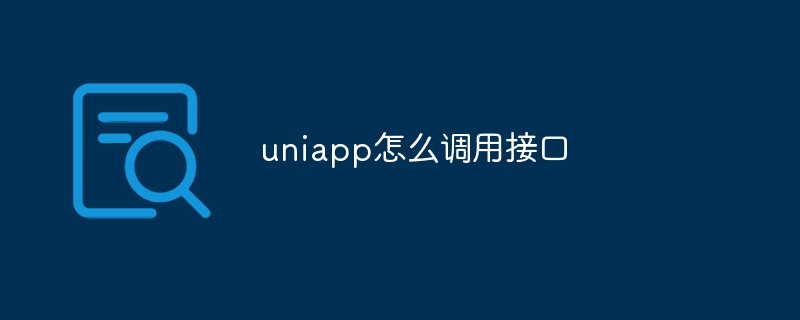Home >Web Front-end >uni-app >How to call interface in uniapp
How to call interface in uniapp
- 下次还敢Original
- 2024-04-06 03:24:19687browse
uni-app calling interface steps: define the request method, including URL, method and data; set the request header (optional); send the request; response processing, including success and failure callbacks.

How to use uni-app to call the interface
Steps:
1. Define the request method
<code class="javascript">const request = uni.request({
url: 'http://example.com/api/v1/users',
method: 'GET',
data: {
name: 'John Doe'
},
success: (res) => {
console.log(res.data)
},
fail: (err) => {
console.log(err)
}
})</code>
Parameter description:
-
url: Requested interface address -
method: Request method (such as GET, POST, PUT, DELETE) -
data: Request parameters (optional) -
success: The callback function when the request is successful -
fail: The callback function when the request fails
2. Settings Request header (optional)
You can use the setRequestHeader() method to set the request header:
<code class="javascript">request.setRequestHeader('Content-Type', 'application/json')</code>
3. Send a request
Callsend() Method to send a request:
<code class="javascript">request.send()</code>
4. Response processing
Process the response of successful request in the success callback function, in fail Error in handling request failure in callback function.
Example:
<code class="javascript">uni.request({
url: 'http://example.com/api/v1/users',
method: 'GET',
success: (res) => {
const users = res.data.users
console.log(users)
},
fail: (err) => {
console.log(err)
}
})</code>
Note:
-
uni.request()Yes Asynchronous requests will not block the execution of subsequent code. - Make sure the interface address and request method are correct.
- For interfaces that require authentication, the necessary token or other credentials need to be carried in the request header.
- When processing a request fails, you can take appropriate measures based on the specific error code, such as retrying the request or prompting the user.
The above is the detailed content of How to call interface in uniapp. For more information, please follow other related articles on the PHP Chinese website!

